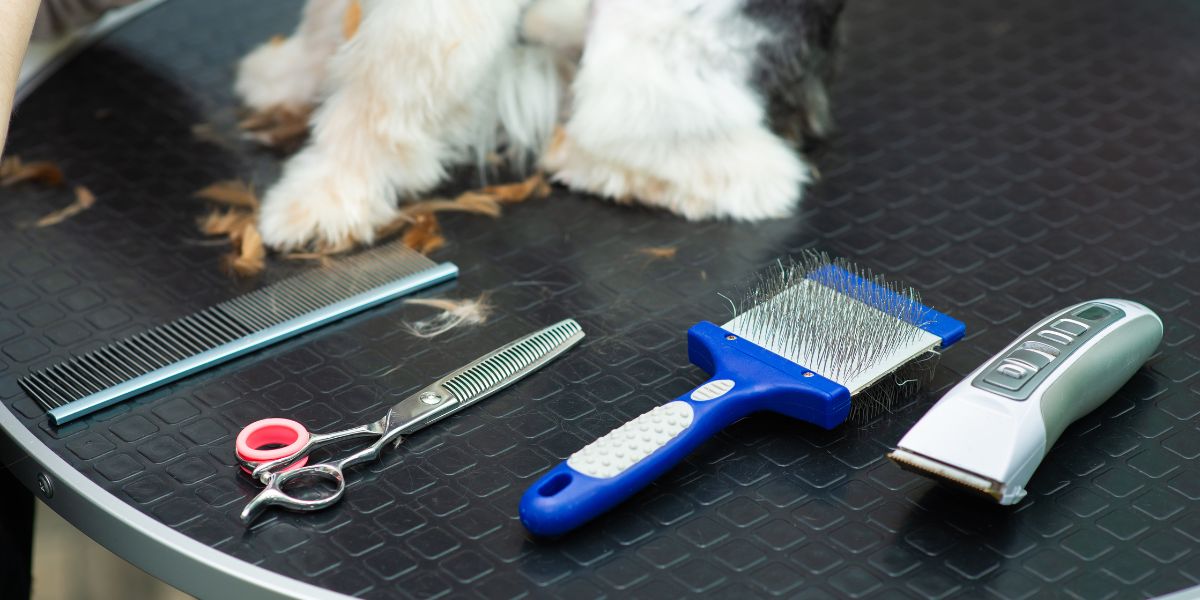
When it comes to grooming your furry friend, selecting the right tools for their coat is crucial. Different dog coats demand specific grooming instruments tailored to their unique textures and lengths. From short-haired breeds to those with luxurious long locks, each requires targeted care to maintain their coat's health and appearance. Understanding which tools suit your dog best can make all the difference in their grooming routine. So, before you start brushing, make sure you're equipped with the proper tools to keep your pup looking pristine and feeling their best.
Short-haired Dog Coats
When grooming short-haired dog coats, a shedding brush is essential for maintaining their sleek appearance. Short-haired breeds like Dalmatians, Beagles, and Boxers shed year-round, so regular brushing helps to minimize loose hair around your home. Using a shedding brush not only removes loose fur but also stimulates the natural oils in your dog's skin, promoting a healthy coat.
In addition to a shedding brush, a rubber grooming mitt can be effective in removing excess hair and massaging your dog's skin. These mitts are gentle yet efficient, making grooming a comfortable experience for your furry companion. Remember to brush in the direction of hair growth to prevent discomfort and skin irritation.
To keep your short-haired dog looking their best, consider using a bristle brush to distribute natural oils and remove any remaining loose hair. This type of brush is gentle on your dog's skin and can help to give their coat a polished finish. Regular grooming with these tools won't only keep your dog looking great but also strengthen your bond through this essential care routine.
Long-haired Dog Coats
For long-haired dog coats, regular grooming with specific tools is crucial to prevent matting and maintain a healthy, beautiful coat. To effectively groom long-haired breeds such as Shih Tzus, Maltese, or Afghan Hounds, you'll need a combination of tools tailored to their coat type. A slicker brush is a must-have for removing tangles and preventing matting in the long, flowing fur. Additionally, a wide-toothed comb can help detangle and separate the hair, especially in areas prone to knots like behind the ears and under the legs.
Investing in a high-quality pair of grooming scissors is essential for trimming around the face, paws, and sanitary areas to keep your long-haired pup looking neat and tidy. Using thinning shears can also help blend and shape the coat for a polished finish. Remember to be gentle and patient while grooming your long-haired dog to ensure a positive experience for both you and your furry friend.
Curly Dog Coats
To properly groom curly dog coats, you'll need specialized tools that cater to their unique fur texture and needs. Curly coats, like those seen in Poodles, Bichon Frises, and Portuguese Water Dogs, require specific grooming to prevent matting and maintain a healthy appearance. A slicker brush is essential for curly coats as it helps to detangle and remove loose fur without damaging the curls. Additionally, a stainless steel comb is beneficial for working through any stubborn mats that may have formed.
When grooming a curly coat, it's important to use a detangling spray or conditioner to make combing easier and prevent breakage. Avoid using brushes with metal bristles as they can damage the delicate curls. Curly coats should be brushed regularly to prevent matting and to distribute natural oils evenly throughout the fur. Finally, trimming the coat every few months can help maintain a neat appearance and prevent mats from forming in hard-to-reach areas.
Double-coated Dog Breeds
Double-coated dog breeds have a dense undercoat beneath a longer outer coat, requiring specific grooming techniques to maintain their coat health and appearance. Breeds like Siberian Huskies, Golden Retrievers, and German Shepherds fall into this category. Regular brushing is essential to prevent matting and reduce shedding. Use a slicker brush or an undercoat rake to remove loose fur and prevent tangles. When grooming, pay extra attention to areas like the neck, chest, and behind the ears where the coat is thicker.
Bathing double-coated breeds should be done sparingly, as frequent baths can strip their coat of natural oils. Use a dog-specific shampoo and conditioner to keep the coat clean without drying out the skin. After bathing, ensure thorough drying, as trapped moisture can lead to skin issues. During shedding seasons, consider using a deshedding tool to help manage the excess fur. Regular grooming not only keeps your double-coated dog looking their best but also contributes to their overall well-being.
Smooth Dog Coats
Smooth-coated dog breeds have a sleek and short coat that requires specific grooming techniques to maintain their appearance and health. When grooming a smooth-coated dog, a rubber curry brush or a grooming mitt can be highly effective in removing loose hair and distributing natural oils throughout the coat. These tools help to keep the coat shiny and healthy while also providing a gentle massage for your furry friend.
Additionally, a bristle brush can be used to remove any remaining loose hairs and dirt, leaving the coat looking smooth and glossy. Regular grooming sessions are essential for smooth-coated breeds to prevent matting and keep shedding under control. A quick once-over with a grooming glove a few times a week can make a significant difference in the cleanliness and health of your dog's coat.
Remember to check your dog's ears, nails, and teeth during grooming sessions to ensure they're in good condition. By using the right grooming tools and techniques, you can help your smooth-coated dog look their best and stay comfortable.




